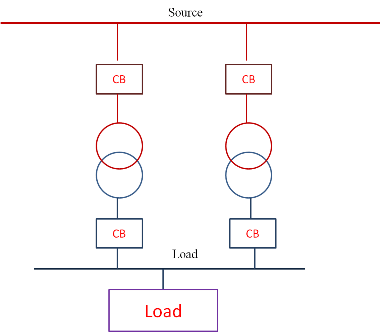Maybe yes, maybe no.
It depends.
What is your proposed connection?
Is your secondary delta or wye?
Are your single phase loads line to line or line to neutral.
The %Z is the most important factor.
In all cases, the KVA bases must be normalized to the same %Z.
Example:
A 25 KVA @ 2.5%z transformer is paralleled with a 100 KVA @7.5% transformer.
1) Both transformers normalized to 7.5 %Z;
100% load on the 25 KVA transformer = 33% load on the 100 KVA transformer.
100% load on the 100 KVA transformer = 300% load on the 25 KVA transformer.
Total safe capacity = 58 KVA (25 KVA + 33 KVA)
2) Both transformers are normalized to 2.5 %Z
Similar results, the impedances and the load sharing stays the same, even though the numbers change.
The maximum safe load occurs when the transformer with the lower %Z is 100% loaded.
But you may also wish to consider:
The maximum safe single phase load on a delta secondary is 2/3 of the rated capacity of the three phase bank.
When adding a transformer in parallel with one side of a delta supply, either double the rated KVA or halve the rated %Z
eg: A transformer is to be added to one side of a three phase delta to support single phase loads.
The three phase bank is comprised of three 100 KVA transformers with impedances of 4%Z.
For purposes of determining the maximum safe loading when adding a single phase transformer, consider one side of the delta bank to be a single 200 KVA transformer with an impedance of 4%Z
An interesting note for the purists:
Transformers in parallel will share the load in the inverse proportion to their PU impedances.
In the case of transformers with the same PU impedance but differing X:R ratios, the transformers will share the load equally, but the sum of the KVA loading on each transformer will be more than the KVA of the load.
Explanations:
It is generally overlooked that KVA is a directed value.
KVA is Kilo-Volt-Amps.
Amps are a directed value, hence KVA must be a directed value.
The directed sum of directed values must always be equal or less than the numeric sum of those values.
Why is this not general knowledge?
When adding load KVA values, the actual KVA at the source will be equal or less than the numeric sum of the KVA loads.
The answer will always be safe and conservative.
Also, it doesn't make much difference.
In the case of transformers, it only makes a difference if the transformer circuits loaded to a KVA equal to the sum of the loads under conditions of maximum ambient temperature for an extended period.
If you are testing transformers in parallel and with differing X/R ratios in a lab, you need this information to make sense of your measurements.
In the field, don't worry.
Bill
--------------------
"Why not the best?"
Jimmy Carter

